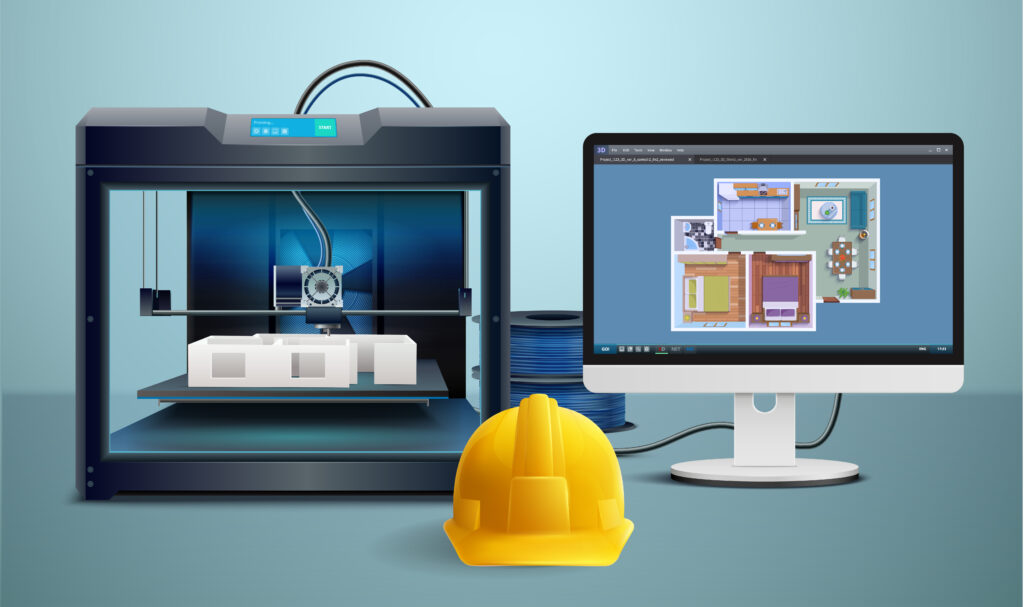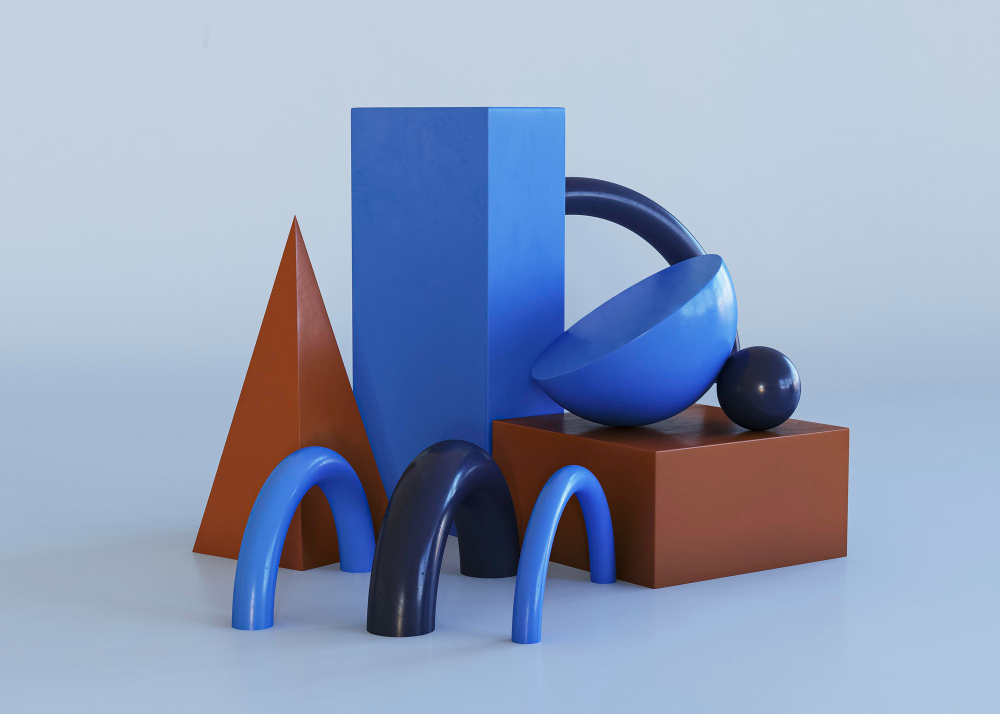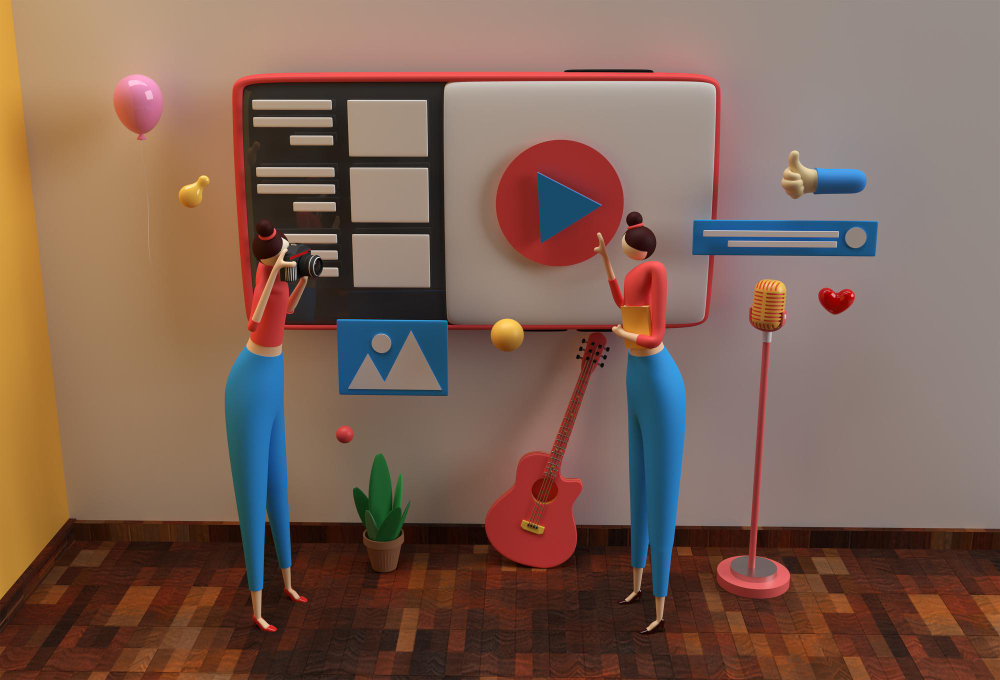Online 3D models are digital versions of things or places that you can see and engage with on the internet. They go beyond only displaying images and allow you to fully immerse yourself in the design in an interesting way. In the field of design, these models are extremely valuable since they are effective tools that enable designers to communicate their concepts more effectively and facilitate understanding by others. Online 3D models greatly improve the 3D design process by making it simpler to translate creative ideas into physical items, whether they are being used for building structures, developing products, or creating virtual worlds.
This has made designing things not only easier, but also brought more people into the design community. So, Let’s explore this world where imagination meets reality and where design gets a whole lot more exciting!
The Rise of Online 3D Models
The popularity of online 3D models is closely linked to the emergence of user-friendly and accessible online 3D modeling tools. These tools have redefined the design landscape, providing users with the capability to create and manipulate 3D models directly through the internet. The accessibility and convenience offered by the tools like 3Daily have democratized the design process, enabling individuals to engage in 3D modeling without the constraints of traditional software installations.
The advantages of online 3D modeling over traditional design methods are not just its accessibility but also its broad range of amazing capabilities. These internet technologies allow users to collaborate in real-time, allowing them to simultaneously create and modify items. Additionally, these tools aid with version control, preventing you from losing any valuable ideas in the process.
Venturing deeper into the world of online 3D models involves exploring free 3D design websites catering to a diverse audience of designers and enthusiasts. Free 3D design websites and tools like 3Daily typically offer user-friendly interfaces, intuitive design tools, and libraries of pre-existing 3D models. These features simplify the design process, empowering users to bring their creative visions to life with greater ease.

Benefits of Using 3D Model Makers and 3D Design Websites Online
The popularity of free 3D design websites and 3D Model Makers is often attributed to their user-friendly interfaces, designed to cater to both beginners and experienced designers alike. Intuitive controls and visually appealing layouts contribute to a positive user experience, lowering the learning curve associated with 3D modeling.
Step by step guide to use online 3D model makers and websites:
1. Choosing the Right Platform
When diving into the world of 3D modeling online for free, it’s essential to compare popular platforms to find the one that suits your needs. Look at what each platform offers and see which one feels right for the kind of 3D modeling you want to do.
Consider important factors such as user-friendliness, available features, and community support when choosing a platform. Make sure it fits your level of expertise and the type of 3D models you want to create. 3Daily as 3D model maker with the fusion of AI created nearly ready-to-use 3D models that can match any requirement.
2. Registration and Setup
To get started with 3D modeling online for free, the first step is to register on the chosen platform. Set up your account by providing the necessary information. This step is crucial for accessing the platform’s full range of features.
Moreover, familiarize yourself with the basic tools and features offered by the platform. Explore options for creating shapes, adding colors, and manipulating your design. Understanding these basics sets the foundation for more intricate 3D modeling.
3. Creating Your First 3D Model
Start your 3D modeling journey by creating a simple model. Begin with basic shapes and gradually experiment with more advanced features. Follow tutorials or guides provided by the platform to enhance your skills and bring your ideas to life in the digital space.
After you have created the basic framework, use this opportunity to give your model a unique touch. Incorporate colors, patterns, and specific elements that match with your concept. This process not only polishes your design but also prepares you to explore the endless creative opportunities that 3D modeling presents.
4. Refining and Detailing Your Design
After creating the foundational structure of your 3D model, delve into the details that will breathe life into your creation. Utilize advanced tools provided by the platform to refine the shapes, add intricate textures, and experiment with various elements that align with your vision. This step is where your creativity truly flourishes, turning a basic model into a visually compelling and intricate piece.
5. Collaborating and Seeking Feedback
Extend the reach of your 3D modeling journey by embracing collaboration. Share your work on the platform or through social media channels, and actively participate in the vibrant community of fellow designers. Engaging in discussions, seeking constructive feedback, and offering insights to others not only enhances your skills but also opens up new perspectives. The collaborative environment adds a social layer to your creative process, transforming it into a shared experience that fuels growth and inspiration.
Transforming Ideas with Online 3D Models
There are many websites and 3D model makers available now, which have simplified the process to create 3D models online. This has opened up new opportunities to transform ideas without much hassles.
1. Unlocking Creativity with Free 3D Model Creators
Free online 3D model creators are fantastic tools for expressing your creative ideas. Whether you’re dreaming up characters, structures, or entire worlds, these tools let you showcase your imagination in three dimensions. It’s like bringing your thoughts to life in a digital space.
2. Customization Options
One of the cool things about free 3D model creators is the ability to customize your creations. You can tweak shapes, colors, and details until your design looks exactly how you want it. This level of customization empowers you to make truly unique and personalized 3D models.
3. Real-Life Applications
Free online 3D modeling isn’t just for fun; it has real-world applications too. You can use these tools to design prototypes of products or inventions. It’s like testing your ideas in a virtual space before bringing them to life. This can save time and resources in the actual production phase.
4. Enhancing Presentations and Marketing Materials
Taking advantage of 3D models in presentations and marketing materials can make a big impact. You can showcase products or concepts in a more engaging and visually appealing way. Whether it’s for a business proposal or a school project, incorporating 3D models adds a professional and creative touch.

Beyond Design: 3D Model Rendering Online
Delving into the world of 3D model rendering involves understanding how designs come to life visually. 3D model rendering is the process of transforming digital models into realistic images or animations. This step is crucial in bringing out the details and visual appeal of a design. It’s like turning a digital blueprint into a lifelike representation.
The importance of 3D model rendering lies in creating high-quality visualizations. It allows designers and creators to showcase their work with realistic lighting, textures, and details. This level of realism enhances the overall presentation, making it easier for others to understand and appreciate the design.
Several platforms now offer the capability of rendering 3D models online. These platforms come equipped with features that enhance the rendering process, such as advanced lighting effects, material rendering, and realistic shadows. Exploring these features can elevate the quality of your visualizations.
The beauty of online 3D model rendering platforms is their seamless integration with the design workflow. Designers can easily transition from creating a 3D model to rendering it without the need for complex transitions. This integration streamlines the overall design process, making it more efficient and user-friendly.
Challenges and Solutions in Online 3D Modeling
Creating online 3D models may come with its own hurdles. These challenges need to be addressed and solved to ensure the best results possible.
Some Common Challenges faced by users in online 3D modeling include:
1. Learning Curve
One of the common challenges users encounter in online 3D modeling is the learning curve. Getting the hang of the tools and techniques can be a bit tricky, especially for beginners. The world of online 3D models has its own language and terminology which can be unfamiliar to the beginners. It’s like learning a new language; it takes time to become fluent.
2. Technical Limitations
Users often face technical limitations, such as slow internet connections or device compatibility issues. These limitations can hinder the smooth experience of creating and editing 3D models online. It’s like having roadblocks that slow down the creative journey.
These challenges and hurdles can be mitigated with these solutions and tips:
1. Online Tutorials and Resources
Firstly, overcoming the learning curve is easier with the help of online tutorials and resources. Many platforms offer step-by-step guides and video tutorials to assist users in mastering the art of online 3D modeling. It’s like having a friendly guide showing you the ropes.
2. Community Support and Forums
Secondly, to tackle technical limitations and share experiences, users can turn to community support and forums. Online communities provide a space where users can ask questions, seek advice, and share their knowledge. It’s like having a group of friends who understand the challenges and can offer solutions to make the journey smoother.
Artificial Intelligence in 3D Design
Artificial Intelligence (AI) has become a transformative force in the realm of 3D design, revolutionizing the way creative processes unfold. In 3D design, AI plays a pivotal role by automating certain tasks, enhancing creativity, and providing innovative solutions. AI algorithms can analyze vast datasets to identify design patterns, predict user preferences, and even generate design concepts autonomously.
One significant application of AI in 3D design is in the creation of generative design tools. These tools leverage AI algorithms to explore countless design possibilities based on specified parameters, enabling designers to discover unique and optimized solutions. This not only accelerates the design process but also introduces novel and unexpected ideas that may not have been conceived through traditional methods. Moreover, AI algorithms can simulate realistic lighting conditions, textures, and even anticipate changes in environmental factors to create highly detailed and immersive 3D renderings.

Conclusion
To sum up, exploring 3D models reveals several useful features that have transformed the way we develop products. Creating an environment where everyone can be creative goes beyond just enabling real-time collaboration and easy access to designs. Not only are these models handy, but they also improve our understanding of design and encourage connections with other designers.
It’s really fascinating to see where 3D design is headed. It’s certain that there will be plenty of exciting new developments in the near future due to the ongoing advancements in innovative technology, internet tools, and design community membership. 3D creations will become further remarkable with the fusion of creativity and technology. So, let’s embrace the constantly evolving field of design, be enthusiastic about trying new things, and take pleasure in watching our concepts become wonderful 3D designs. Check 3Daily for more details.



